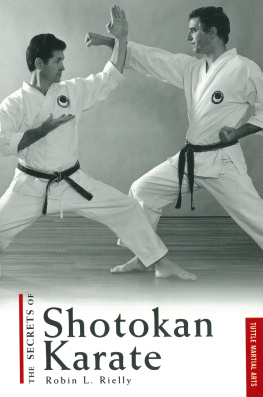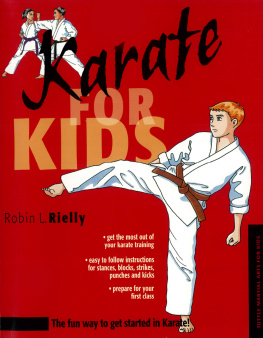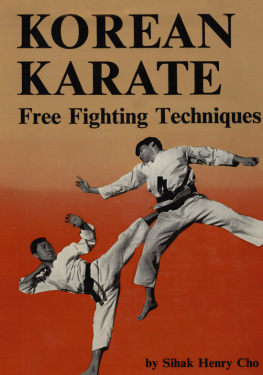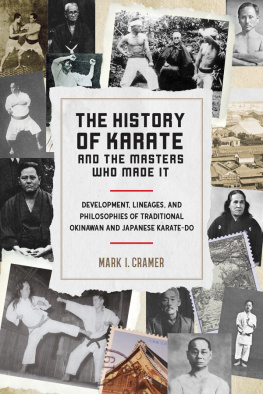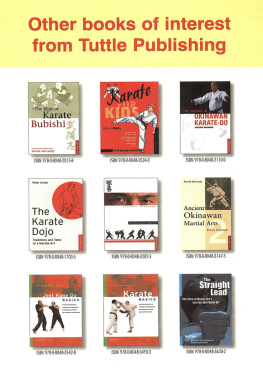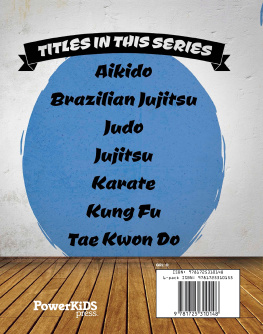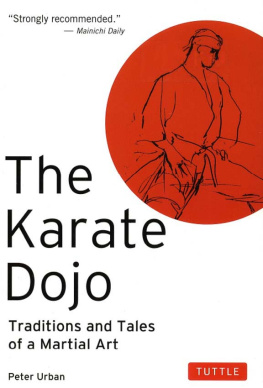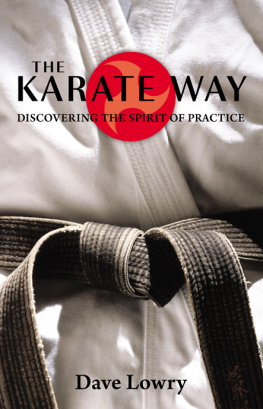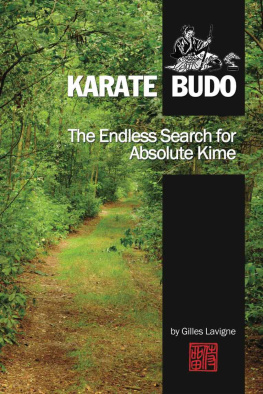CHAPTER ONE
Basic Physical-Psychological Principles
Zen and the Martial Arts
The long and secretive history of the Asian martial arts is replete with references to Zen Buddhism and Zen principles. The origins of these Zen influences can be traced back many centuries to the legendary travels of Bodhidharma, although many of the stories about him are questioned by historians.
According to the legends, Bodhidharma (Daruma Taishi in Japanese) was an Indian monk who was born into the warrior caste (Kshatriya). In his youth he was trained in the warriors arts that were prevalent at the time. This included a weaponless form of fighting known as vajramushti. Eventually he began the study of Zen Buddhism under the Indian master Prajnatara. Later in his life he traveled to China to spread the Zen school of Buddhism. The date for this journey is also in dispute; however, most authorities assert that it took place around 520 A.D.
Once in China, Bodhidharma traveled throughout the country, eventually settling at the Shaolin monastery in Sung Shan. The rigors of the Zen Buddhism that he taught proved excessive for the monks, and in order to strengthen them physically, he included martial arts training, similar to that which he had undergone in India. This training became the basis for the fighting systems developed at the monastery, systems that also enabled the monks to defend themselves against bandits. Since that time, karate and Zen have been inexorably intertwined, and no traditional karate school is without a Zen influence.
Chinese-style karate eventually spread to Okinawa and Korea, where the Zen influence was transferred along with the physical art. Eventually, in the twentieth century, karate was spread to Japan proper by Okinawan masters such as Gichin Funakoshi, Chojun Miyagi, and Kenwa Mabuni. Once established there, it was influenced by the native fighting systems, notably jujitsu and kenjitsu.

Plate 1 Two studies of a Buddhist monk by Hokusai. Photo courtesy of the Philadelphia Museum of Art: Purchased through the Taylor Fund.
These Japanese combative systems already had a strong Zen influence, dating to the beginnings of Zen Buddhism in Japan in the twelfth century. This introduction of Zen into Japan took place roughly about the same time that the warrior caste (samurai) came into power.
Within a century, the value system of the Zen Buddhists had influenced the samurai. Ultimately those who became top sword and spear masters were buoyed in their training by the ability to concentrate during combat, achieving a state of mind known as mushin (no-mind). This mental condition enabled the warrior to block out all thought of death and concentrate completely on his technique.
As time wore on and Japan became a unified nation under the Tokugawa clan (c. 1600), the need for combat-ready warriors lessened. The training in technique and Zen intensified, and warriors no longer called upon to fight in clan wars attempted to refine and perfect their fighting techniques. This led to advances in martial arts techniques and ultimately to a greater emphasis on Zen training in the martial arts.
By the time karate was introduced to Japan proper in the early twentieth century, the Zen tradition in martial arts was so strong that practically every martial artist strove to perfect his technique by using Zen concentration. When Zen-influenced karate was introduced from Okinawa, it was readily accepted into the family of Japanese martial arts. Virtually all classical karate systems today keep the Zen tradition, and its principles underlie all of them.
Zen and Karate
Much has been made of the relationship between karate and Zen Buddhism; however, it seems that many students who wish to master karate fail to comprehend the connection. They still seek verbal answers to that which must be understood nonverbally.
To begin with, an instructional manual of this sort is not really in keeping with the Zen tradition in martial arts. In martial arts training in the past, a student simply learned a technique from his teacher and then commenced to practice it vigorously. A request for an explanation as to how the technique might be used, or the reason for doing it a certain way, would usually be answered with a Zen-type of response: Train three years and then ask. If the student still had the temerity to ask at the end of the three years, the answer would be the same. In short, there is no satisfactory way of verbally explaining techniques that compares to understanding gained through self-discovery. An instructor can stand in front of a student and tell him repeatedly that his rising block is too low, and still the student never seems to correct it. But if the instructor swings a kendo shinai at the students head and the block is still too low, it will become immediately apparent to the student that there is a flaw in his blocking technique. Students who receive such a crack on the head quickly learn through experience how to properly execute a block. This method of training follows the principles of Zen in that one learns through experience, rather than through verbal instruction.

Plate 2 Ken Zen Ichinyo (The fist and zen are the same). Calligraphy by karate master Masatoshi Nakayama, presented to the Kobukan Karate Club.
Is this type of training to be preferred over the lengthy verbal explanations and references to training manuals? In the present day, particularly in the West, traditional training would discourage many students, even those who think they will become Zen experts in the process of learning karate. Perhaps that is one reason why few true martial arts experts are produced in the Western world. Trends in present-day karate training seem to be away from Zen practices. Today, the average karate student, particularly outside Japan, receives detailed explanations about how techniques should be performed and why. This produces karate practitioners who have great knowledge of theory, but perhaps little feeling for the art they practice. It may be that Zen-type karate training is not suitable for Westerners. In determining if this is true, a consideration of the circumstances of present-day training is necessary.
Many small, nonprofit clubs existhowever, they need space to train, and that space must be rented. This produces a dilemma for instructors who must ensure that there will be enough students so that the karate club can afford to pay the rent. Since money becomes a consideration, it is necessary to keep students. Many would quit if exposed to old-style training methods which, although preserving the true tradition of Zen martial arts, place little value on retaining large numbers of students. This problem was recognized by Japanese instructors who attempted to teach Westerners in Japan after World War II and by the karate instructors who came here in the early 1960s.
Training in those years was somewhat different from that of the present day. American students who trained with Japanese instructors in the 1960s knew better than to ask for explanations. They would either receive a Zen-type reply or a crack over the head with the kendo shinai. This left them with the choice of quitting practice or continuing to train while seeking the answers for themselves. Many quit. By the end of the 1960s, it had become apparent that authentic Japanese karate was not expanding greatly, so some changes in training methods were made. More verbal explanations were given for techniques, and students were able to get answers to questions readily, without practicing for years. This change, of course, was not in keeping with tradition. The question then, is whether the new style of training is superior or inferior to the old. In all likelihood, the end results will be the same; the main difference is that more people will remain in karate training, and the number of Zen-type trainees will continue to grow. The answer to the question, then, is that todays training is not better or worse, just different. If the goal of karate training is to develop self-discipline and self-control in people, then it is necessary to keep students in training in order to accomplish the task. Making training harder and less understandable will not achieve that goal.

